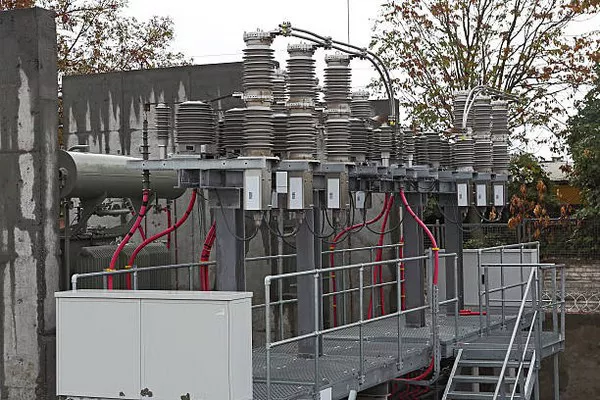The Seebeck generator, also known as a thermoelectric generator (TEG), harnesses the principles of thermoelectric effects to convert thermal energy into electrical energy. Named after the German physicist Thomas Johann Seebeck, who discovered the phenomenon in 1821, this technology has gained increasing attention in recent years due to its potential applications in energy harvesting, waste heat recovery, and renewable energy solutions. This article explores the fundamental principles underlying Seebeck generators, their components, working mechanisms, applications, and future directions in research and development.
The Thermoelectric Effect
The operation of a Seebeck generator is based on the Seebeck effect, which describes the generation of an electric voltage when there is a temperature difference across two different conductive materials. When one junction of a thermoelectric material is heated while the other remains cool, charge carriers (electrons or holes) in the material diffuse from the hot side to the cold side. This movement creates an electric potential difference, resulting in a measurable voltage.
Key Concepts in Thermoelectricity
Seebeck Coefficient: The Seebeck coefficient (S) quantifies the magnitude of the induced voltage per unit temperature difference. Different materials exhibit different Seebeck coefficients, making material selection critical for optimizing generator performance.
Electrical Conductivity: For a thermoelectric generator to be efficient, the material must also possess good electrical conductivity to minimize energy losses.
Thermal Conductivity: Low thermal conductivity is desirable, as it ensures that the temperature gradient is maintained, thereby maximizing the efficiency of the thermoelectric conversion.
Figure of Merit (ZT): The performance of thermoelectric materials is often expressed through the dimensionless figure of merit (ZT), defined as:
ZT=
where σis the electrical conductivity, κ\kappa is the thermal conductivity, and T is the absolute temperature. A higher ZT value indicates better performance.
Components of a Seebeck Generator
A typical Seebeck generator consists of several key components:
Thermoelectric Materials: The heart of the generator, these materials are selected based on their thermoelectric properties. Common materials include bismuth telluride (Bi2Te3), lead telluride (PbTe), and silicon-germanium (SiGe) alloys.
Heat Exchangers: These components are essential for maintaining the temperature differential across the thermoelectric materials. They enhance the heat absorption on the hot side and facilitate heat dissipation on the cold side.
Electrical Load: The load converts the generated electrical energy into usable power. This can range from powering small electronic devices to feeding into a larger electrical grid.
Heat Source: The source of heat can be industrial processes, automotive exhaust, or even renewable sources like solar thermal systems.
Working Mechanism of a Seebeck Generator
Basic Operation
The working mechanism of a Seebeck generator can be broken down into the following steps:
Temperature Gradient Creation: A heat source raises the temperature of one side of the thermoelectric materials while the opposite side is kept at a lower temperature, creating a temperature gradient.
Charge Carrier Movement: Due to the temperature difference, charge carriers in the thermoelectric material begin to migrate from the hot side to the cold side. This movement of charge carriers is driven by the reduction in energy state as they move toward the cooler area.
Voltage Generation: As charge carriers accumulate on the cooler side, an electric potential builds up. The accumulated charge generates a voltage difference across the thermoelectric material.
Electrical Output: The generated voltage can then be harnessed to do work, such as powering electronic devices or charging batteries.
System Efficiency
The efficiency of a Seebeck generator is influenced by several factors, including the temperature difference across the material, the intrinsic properties of the thermoelectric materials, and the design of the system. The efficiency (η\eta) can be expressed as:
η=Vout*Iout/Qin
where is the output voltage, is the output current, and Qin is the heat input.
Applications of Seebeck Generators
The versatility of Seebeck generators allows for a wide range of applications, including:
Waste Heat Recovery: Industries generate vast amounts of waste heat, which can be harnessed using Seebeck generators to improve overall energy efficiency.
Automotive Industry: TEGs can be used in vehicles to convert waste heat from exhaust systems into electrical power, thereby improving fuel efficiency and reducing emissions.
Remote Power Generation: Seebeck generators are suitable for remote and off-grid applications, such as powering sensors and electronic devices in inaccessible locations.
Space Applications: In space missions, where solar energy is limited, thermoelectric generators can convert heat from radioactive decay into electricity, providing a reliable power source for spacecraft.
Renewable Energy Systems: TEGs can complement solar thermal systems, converting excess thermal energy into electrical energy.
See Also What Watt Generator Do I Need For My House
Conclusion
Seebeck generators represent a vital technology for converting waste heat into useful electrical energy, contributing to energy efficiency and sustainability across various industries. Understanding the principles behind their operation, material characteristics, and potential applications lays the groundwork for future advancements in this field. As research progresses and technologies evolve, Seebeck generators hold the promise of playing a significant role in our energy landscape, offering innovative solutions to some of the pressing energy challenges of our time.

